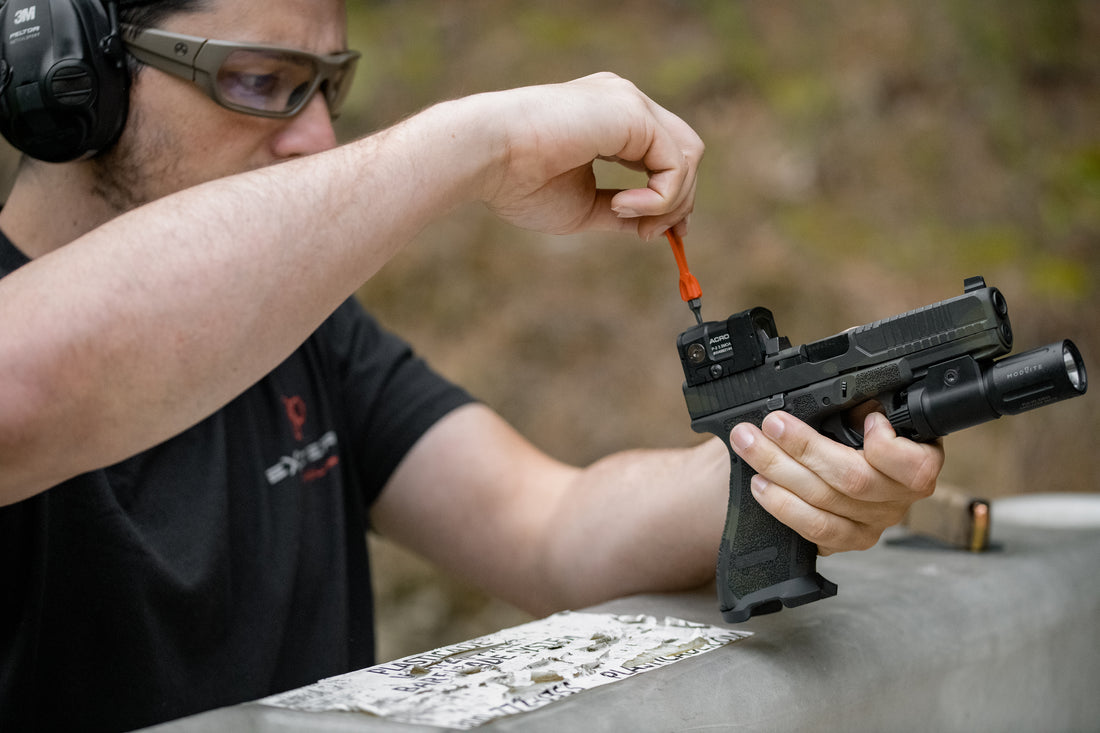When it comes to pistol shooting, achieving a proper zero is crucial for accuracy and consistency. A zero refers to aligning the sights of a pistol so that the point of aim coincides with the point of impact at a specific distance. A well-established zero ensures that your shots consistently hit where you aim, enabling you to make effective adjustments for different shooting scenarios. In this blog post, we will delve into the importance of pistol zeros, discuss different zeroing methods, and provide tips for achieving a precise and reliable zero.
1. Understanding the Importance of Pistol Zeros:
A proper pistol zero is the foundation for accurate shooting. It allows you to develop confidence in your sight alignment, understand the trajectory of your chosen ammunition, and make precise adjustments for varying distances. Whether you use iron sights or a pistol-mounted optic, a reliable zero ensures that you can consistently engage targets with accuracy and efficiency.
2. Establishing a Zero Distance:
The zero distance refers to the distance at which you align your sights to coincide with the point of impact. The most common zero distances for pistols are 25 yards/meters and 50 yards/meters, depending on the shooting discipline and personal preference. A 25-yard/meter zero is often preferred for self-defense and close-quarters engagements, while a 50-yard/meter zero is popular among competitive shooters who require greater accuracy at longer distances.
3. Choosing a Zeroing Method:
There are different methods for zeroing a pistol, each with its own advantages and considerations. The most common methods include the "Bullseye," "Six O'Clock," and "Combat" zeros:
- Bullseye: With this method, you align the top of your front sight with the center of the bullseye target. This zero is often used for precision shooting, allowing shooters to achieve a consistent point of aim/point of impact relationship.
- Six O'Clock: In this method, you align the top of your front sight with the bottom of the target's bullseye. This zero is commonly used in competitive shooting disciplines such as bullseye and precision shooting.
- Combat: The combat zero aligns the top of your front sight with the center of the target. This method is popular among self-defense shooters as it provides a balance between precision and speed, allowing for quick target acquisition and effective engagement.
4. Zeroing Process:
To achieve a precise zero, follow these steps:
- Start at a known distance, such as 25 yards/meters or 50 yards/meters, depending on your preference.
- Establish a stable shooting platform and ensure proper grip, stance, and trigger control.
- Aim at the desired point of aim (bullseye, six o'clock, or center of target) and fire a group of shots.
- Assess the group's point of impact in relation to the point of aim. Adjust the sights as necessary to move the point of impact closer to the desired point of aim.
- Repeat the process, making incremental sight adjustments until the point of aim and point of impact coincide.
5. Consistency and Validation:
Consistency is key when zeroing a pistol. Repeat the zeroing process multiple times to validate your results and ensure consistency across different shooting sessions. Take note of any variations or trends in your groups and make necessary adjustments. Additionally, document your zeroing data for future reference and to aid in making accurate adjustments when engaging targets at different distances.
6. Practical Considerations:
Keep the following considerations in mind when zeroing a pistol:
- Use quality ammunition that you plan to regularly shoot with to achieve a zero that accurately represents the ammunition's trajectory.
- Consider environmental factors such as wind and lighting conditions, as they can affect your point of impact.

